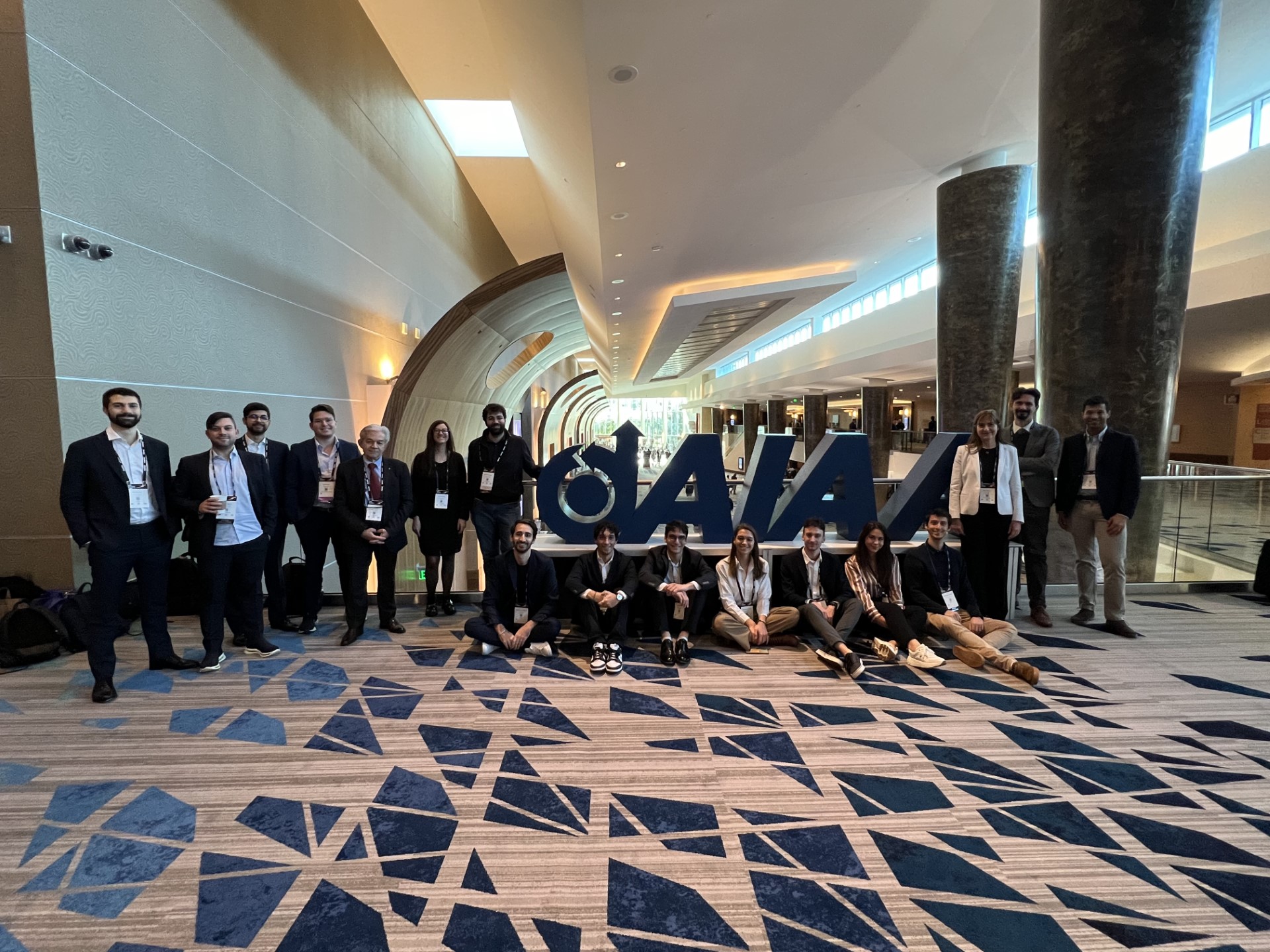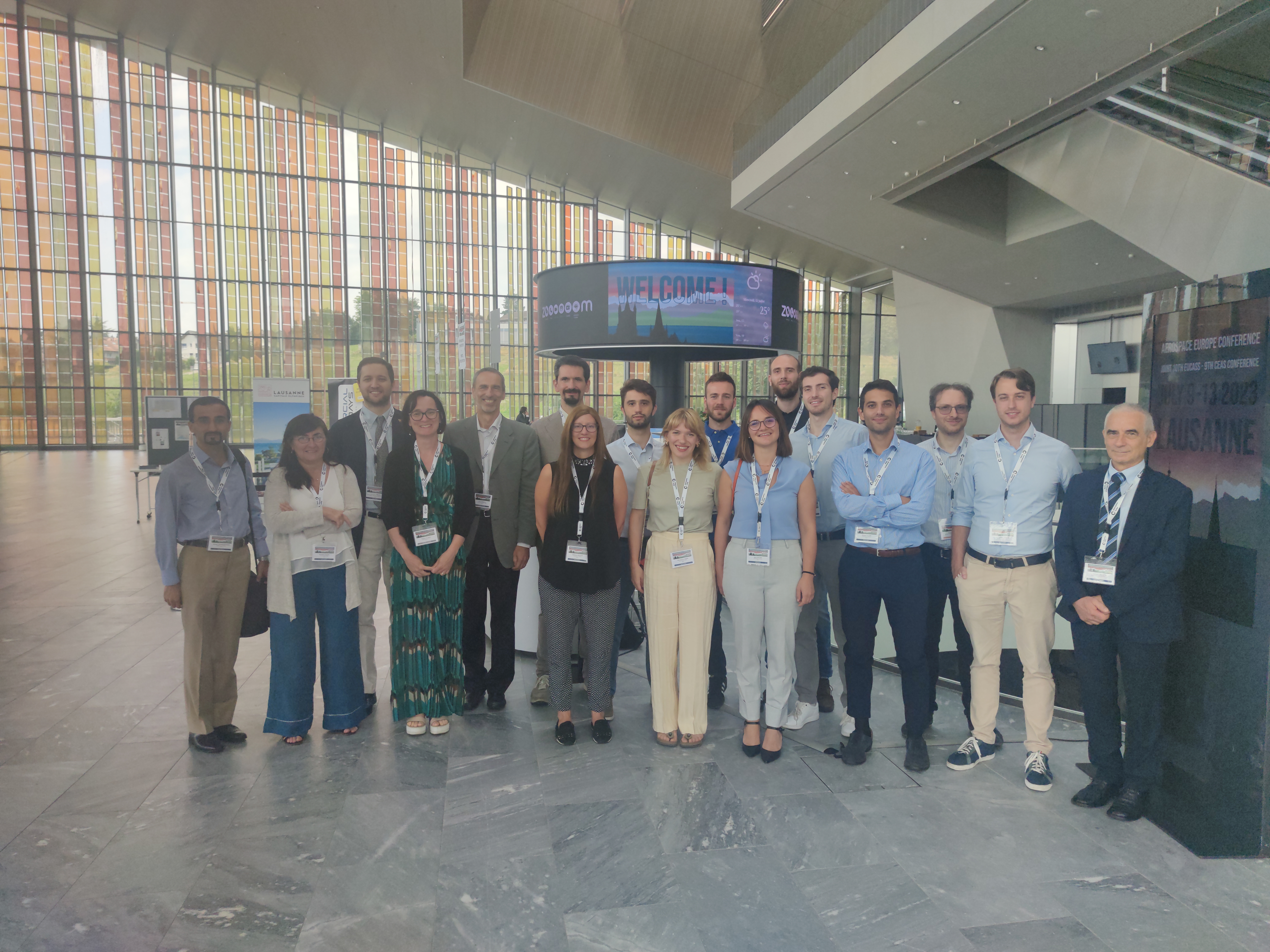SPLab - Space Propulsion Laboratory and Nanoenergetics

ONGOING ACTIVITIES
High energy density fuels
The use of metals is a common practice for solid rockets while for hybrid propulsion is still a matter of research. During combustion, metals oxidize and release enthalpy, leading to benefits to combustion and performance. However, inefficiencies are expected (mainly agglomeration) and a contraction of potential performance gain is expected. A very active research area consists of the use of novel energetic additives. In one direction, the improvement of metal ignition properties or the enhancement of their reactivity is envisaged by using catalysis or by modifying metal features (nanometals, activated metals, coatings). On the other hand, performance improvement is possible when ingredients with superior thermochemical properties are adopted (namely, metal hydrides).
In this field the SPLab is performing a wide analysis of several novel ingredients, supplied by research partners all over the world (mainly, US, Russia, and Sweden). In this sense, the analysis of performance losses by thermochemical analysis or modeling, the development of protocols for the characterization and application of ingredients, the investigation of application issues (dispersion, compounding, curing of binder, aging) is a matter of research.
In this last couple of years the focus was mainly posed on the theoretical and experimental analysis of solid propellants and hybrid fuels containing regular aluminum, nanometric aluminum produced by Russian partner, boron-based ingredients (US source). Moreover, in the frame of a FP7 European project, also newly developed aluminum hydride (from The Netherlands) and chemically activated micrometric aluminum powders (from Sweden) are under investigation. Improvement of delivered specific impulse was addressed in solid propellants while increase of regression rate was targeted for hybrid fuels. On the basis of such work, some new activities on the production of activated metal powders (featured by enhanced reactivity) recently started.
From the numerical point of view, several activities cover both solid and hybrid propulsion. The development of a specific code for heterogeneous material modeling and reproduction, useful for the investigation of propellant microstructure, has come to a good maturity step and will be productive in the incoming year. The grounding analysis of hybrid rocket flame principles is performed by using both zero-dimensional to two-dimensional research codes, based respectively on a self-developed Matlab framework and on OpenFOAMTM solvers (both standard and customized).
Development of diagnostic tools
The analysis of the combustion process is performed at SPLab by following the event at run time. The proper development of diagnostic tools is needed in order to rate the behavior of different materials (measurement of regression or burning rate), as well as to understand the details of the surface processes by observing the flame with a proper apparatus. All these information are needed to tailor the development of novel formulations and perform grounding research on the combustion principles.
The time-resolved analysis of hybrid fuel sample combustion has represented a trend of intense activity in the last couple of years and now has come to maturity. The need stems from the dependence of fuel regression rate from oxidizer specific mass flow rate which, in turn, changes in time. A theoretical framework has been established in order to have a more rigorous interpretation of experimental data from tests and represents a step forward with respect to the standard thickness-over-time approach used up to now in the open literature. On this activity, an automated regression rate analysis tool is under development and is now in an advanced experimental status. SPLab has a 10-year-experiemce in the automated measurement of propellant burning rates with in-house software Hydra but current development started from scratch, given the different type of flame structure.
Also in terms of diagnostics, in the frame of “SPARTAN” FP7 project, a regression rate sensor has been developed for the diagnostics of combustion issues in hybrid rockets. Prototyping and testing of the sensor and of the acquisition protocol was accomplished successfully, supporting a patent request which was submitted in July 2013.
Rocket concepts for deorbiting
In the recent years the issue of space debris has come to the attention of the scientific community as well as of the general public. Chasing, mating and deorbiting of large objects is widely acknowledged as a priority by the international community but a straightforward solution has not yet been identified.
In this respect the SPLab is heading an Italian workgroup that is cooperating on the subject along with partners from France and Russia. Whereas the workgroup is considering the details and the issues of the whole mission, the SPLab is focusing on propulsion-related technology aspects for the disposal of abandoned spacecrafts and objects, being hybrid rockets good candidates for such maneuver.
Several aspects are now under investigation at SPLab which is looking primarily at performance parameters, sizes, reignition capability, choice of fuel-oxidizer candidates and compact design options for the combustion chamber. The activity is still undergoing and a financing request was submitted to the Italian Research Ministry. Achievements obtained so far are subject of several publications on journals and meeting proceedings.
FUTURE PLANS
Two FP7 Projects will be concluded in the Spring 2014:
- SPARTAN, directed by Thales Alenia, dedicated to a Martian lander by hybrid rocket propulsion;
- HISP, directed by FOI, dedicated to High Specific Impulse rocket propulsion for space exploration.
Two more Projects are under progress sponsored by Avio Space Propulsion:
- Ballistic Anomalies of Metallized Solid Rocket Propellants;
- Condensed Combustion Residues Characterization.
Another Project sponsored by ESA and directed by GMV is concerned with post-flight data analysis, with reference to the VEGA launcher.
Informal cooperative activities will continue with:
- STK – SibTermoKhim, Tomsk, Russia for the analysis of nanometals.
- MACH1, King of Prussia, PA, USA for the analysis of MgB composite metals and castable Fluoropolymers (both proprietary compositions).
Application(s) were made for two PRIN projects.
Several long term visits (6 to 12 months) are expected from:
- Israel (Prof. Benveniste Natan), Algeria (Dr. Djalal Trache), Russia (Dr Konstantin Monogarov), China (Dr. Pang Wei-qiang), and so on.
ERC KEYWORDS
- PE5-6 New materials: oxides, alloys, composite, organic-inorganic hybrid, nanoparticles
- PE8-5 Fluid mechanics, hydraulic-, turbo-, and piston engines
- PE9-15 Space Sciences
- PE8-1 Aerospace Engineering
FREE KEYWORDS
- Thermochemical propulsion
- Energetic materials
Magazine Articles

DAER AT 2024 AIAA SCITECH FORUM

RECS SATELLITE REFUELING DEMO, A COLLABORATION BETWEEN SPLAB/DAER AND D-ORBIT, IS IN ORBIT

TEAM DI STUDENTI VINCONO GLI EXCELLENCE CLUB AEROSPACE 2023 AWARD

DAER @ AEROSPACE EUROPE CONFERENCE 2023 - JOINT 10TH EUCASS & 9TH CEAS

MATERIALS FROM SPLAB-POLIMI AND REACTIVE POWDER TECHNOLOGY CAN IMPROVE DEMISABILITY OF SATELLITES

ARMORED GRAIN BY RICCARDO BISIN - HYBRID ROCKET PROPULSION AT SPLAB

ARTEMIS: DALLA TERRA ALLA LUNA E RITORNO. SPECIALE SU FOCUS TV

PAPER BY CARLOTTI AND MAGGI SELECTED BY MDPI AS COVER STORY

SCIENTIFIC COMMUNITY DISCUSSES ABOUT ENVIRONMENTAL IMPACT OF SPACE TOURISM

RICCARDO BISIN, POLIMI PHD CANDIDATE, SELECTED BY ESA FOR THE STUDENT PARTICIPATION PROGRAMME 2019

THE CONTRIBUTION OF STELIUM TEAM TO THE STUDY OF MAGNETIC LIQUID SLOSHING IN MICROGRAVITY


